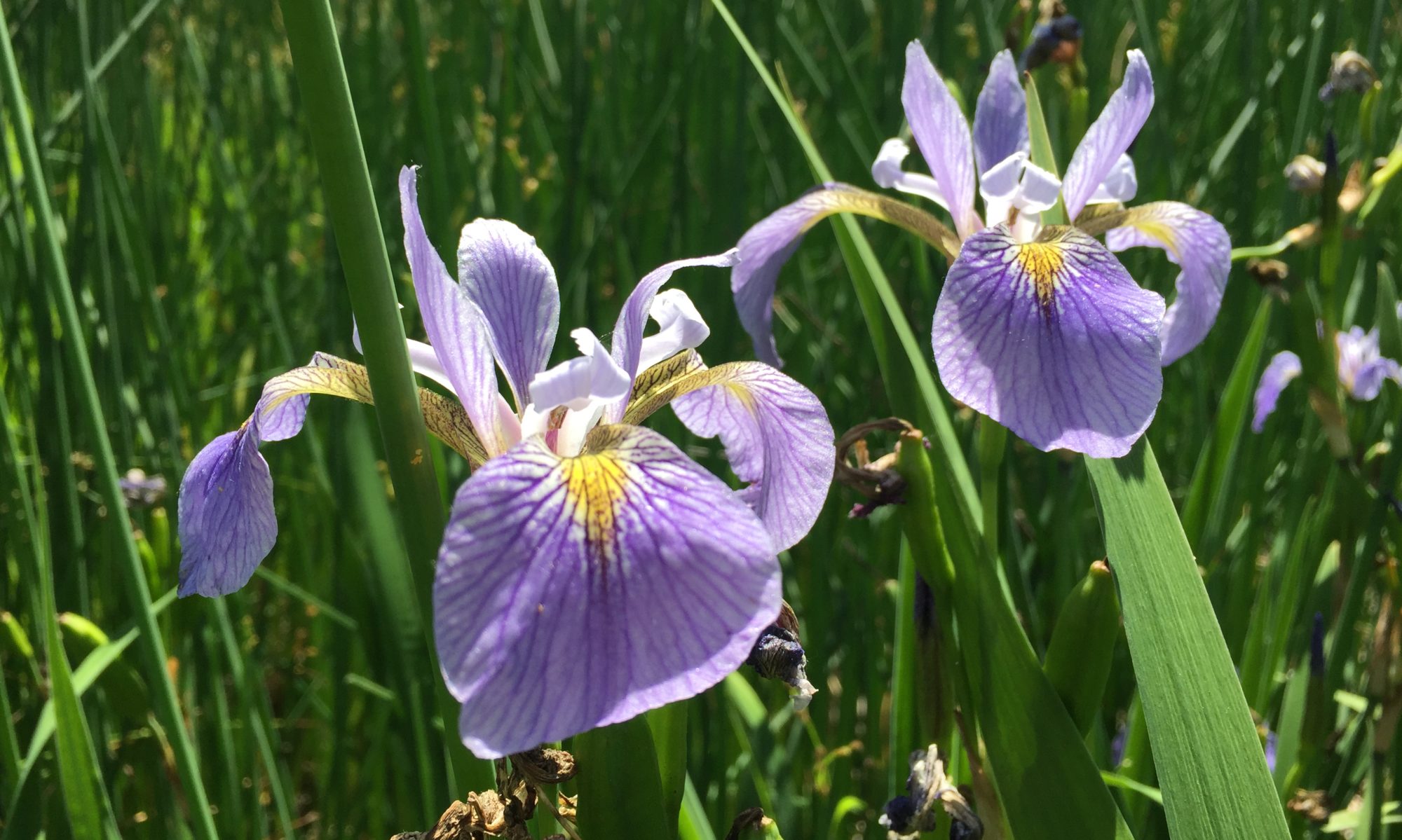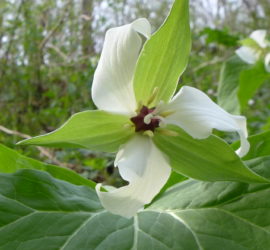WHICH SPECIES WILL INHERIT THE FOREST?
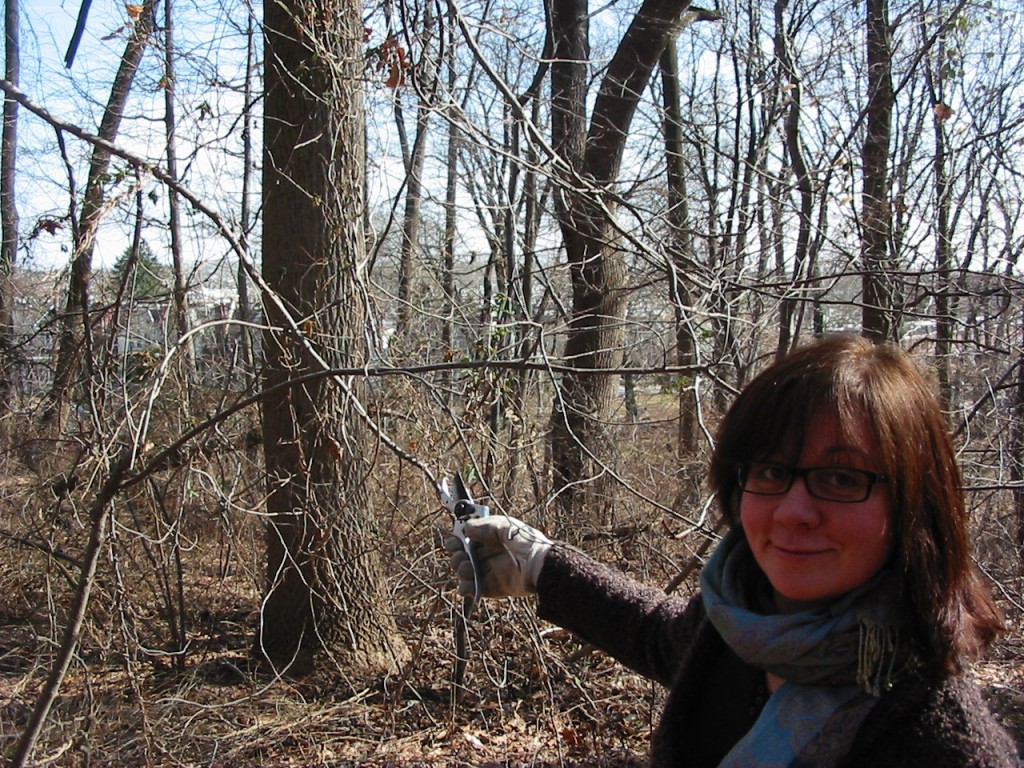
THE SANGUINE ROOT ENVIRONMENTAL RESTORATION TEAM TOURS MORRIS PARK. MULTI-FLORA ROSE FOUND TO COMPLETELY DESTROY NATIVE HERBACEOUS POPULATIONS AND SEVERELY STIFLE GROWTH OF Â TREES AND SHRUBS.
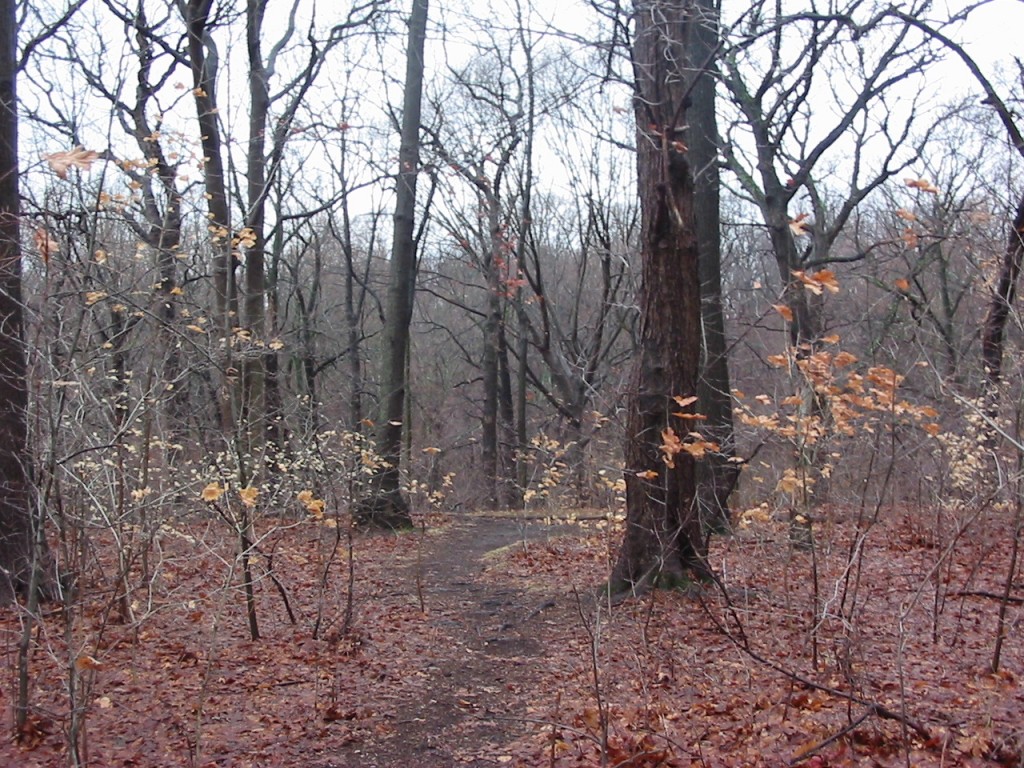
This week’s rain gave Morris Park  vibrant and rich colors, reminiscent of fall, and sharply contrasting with the past few months snowy winter landscape.  A welcome change and transition into spring.
The site in the above picture is rich with diversity. It is graced with many tree saplings, that will become the future forest as long as they are protected.
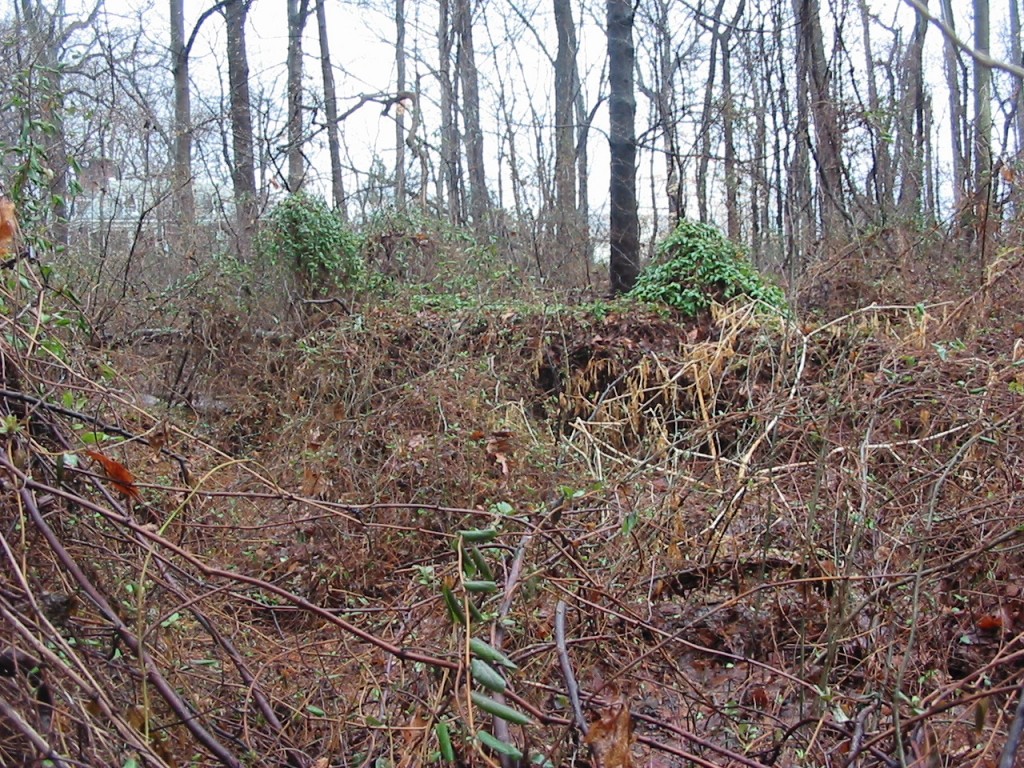
The rich vibrancy of the late winter forest also highlighted the harsh realities it faces.  This severely degraded area surrounded by vine covered at-risk trees is a soon to be gaping hole in the forest that could take half a century to recover from. That is only if there is human intervention. If there is not, this infestation will spread outwards consuming even more acreage of forest.  All the while spewing out massive quantities of seed, threatening other areas of the park and other natural areas beyond, as well as the yards of neighboring homes.
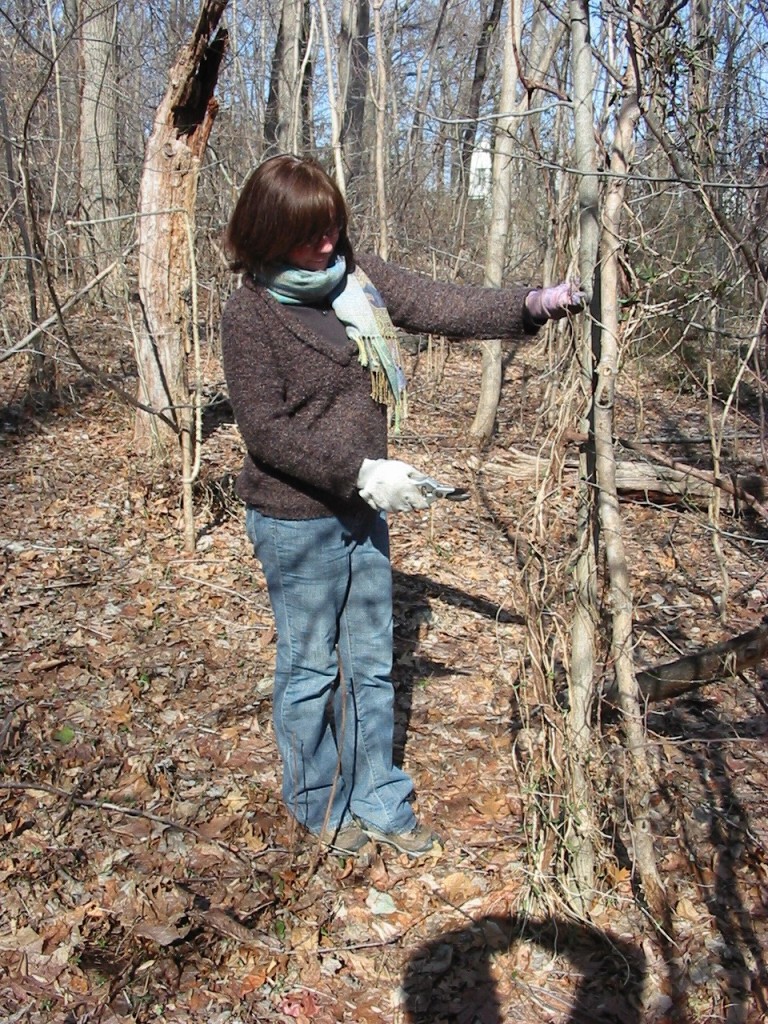
The Japanese Honeysuckle and Multiflora rose (Rosa multiflora) vines will kill a small tree or even a whole grouping of trees, denying the forest its regenerative ability. Â Those majestic tall trees overhead are not going to last forever, and when they die, what will there be to replace them? Â An invasion of exotic, imported plants, often escaped from yards and gardens, will set a forest back many years, if not altogether destroying it. Â What was innocently purchased at the garden center, with the best intentions of beautifying ones yard and bringing joy to our families and neighbors, in many cases has easily escaped into the natural world and has turned into a growing menace, blighting forests and endangering species.
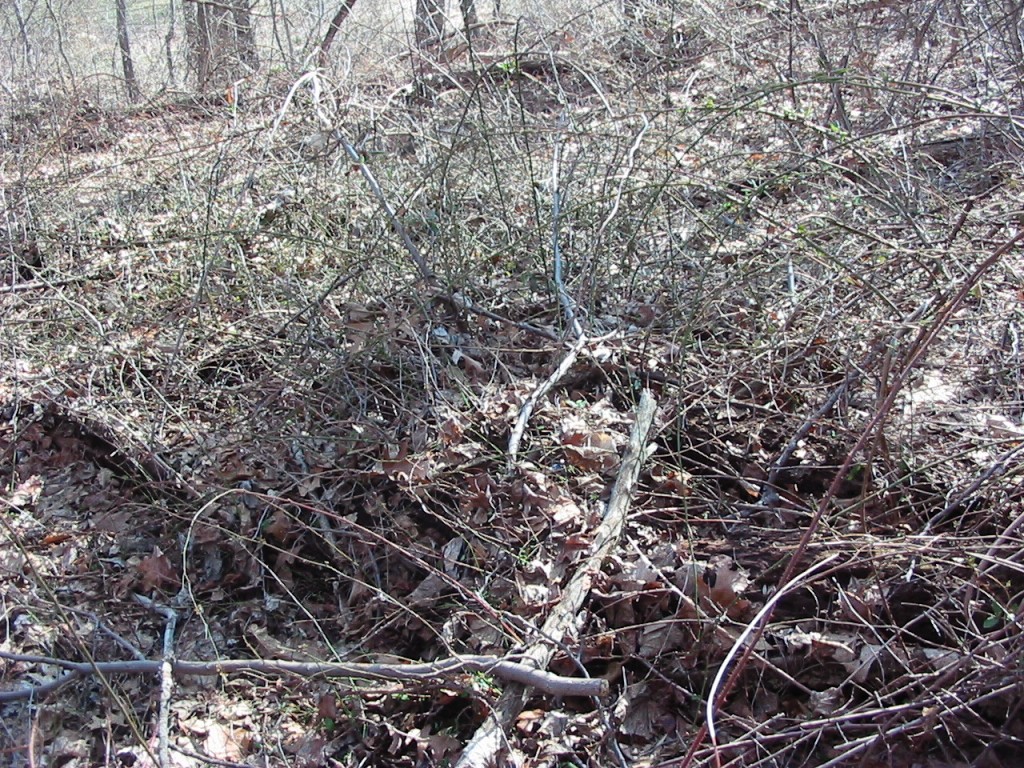
Japanese Honeysuckle remained an innocuous and pretty yard enhancement in the United States for many years. It didnt escape or present itself as a problem. Then it became a problem. What changed? How did this pretty vine become a pest? Â The answer lies in the fact that it is a plant that evolved for millions of years on another continent, in a complex ecosystem of checks and balances, with many other species playing a part in the success and failures of Japanese Honeysuckle. Â Brought to the far shores, 7-10,000 miles away from its evolutionary birthplace and home, the species adapted, was admired and widely planted and enjoyed as a garden specimen. Its fragrant flowers are a joy to experience.
Then it became a noxious weed. Â A plant that has never been in this ecosystem, can either immediately die, like a palm tree from the big box store, or it can turn into a monster, and run rampant through the woods.
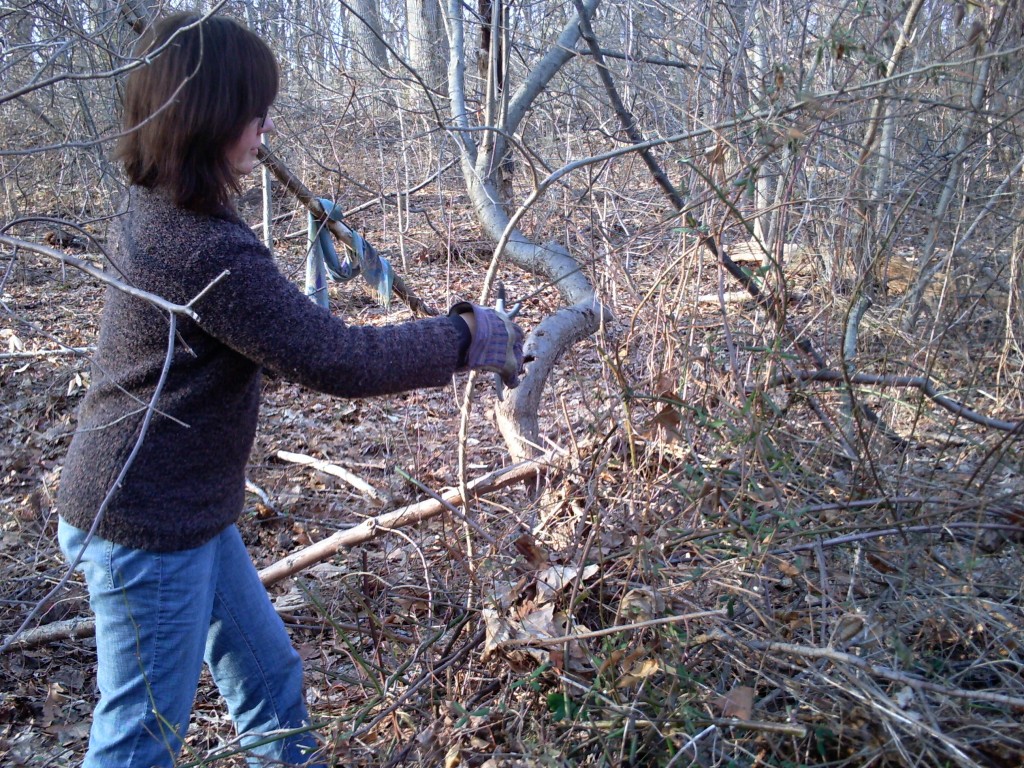
Multi flora rose was also introduced with the best of intentions. Its roots were used in the nursery industry, the Multiflora rose was thought to be a useful base species for grafting more glorious rose plants on top of the cut canes. Â Then the Multi-flora rose was thought to be a good plant for roadsides, and was widely planted to prevent erosion of embankments all over the country. Â This practice spread the exotic species everywhere, and now it is such a problem that it is classified as a noxious weed in some states. Pennsylvania, which has only classified 13 noxious weeds, includes Multiflora rose. (Just to note, it is very interesting to see which states classify noxious weeds and how many and if they do at all. New Jersey claims by default that there are no noxious weeds in the state by not even having a classification.)
Today the environmental restoration team found a patch of Multiflora rose that was threatening existing live saplings of  native trees and shrubs that were growing in the midst of the infestation. Usually we prioritize invasive eradication for situations where the invasives are threatening a less disturbed native ecosystem, or the invasive species is an emerging threat in the forest such as the Japanese Angelica tree (Aralia elata).  When we found that there were native shrubs and trees that were still alive in the mass of Rosa multiflora, we made our move.
We suited up in denim, put on some tough gloves, sharpened our clippers to a razors edge, oiled our tools and strategized.
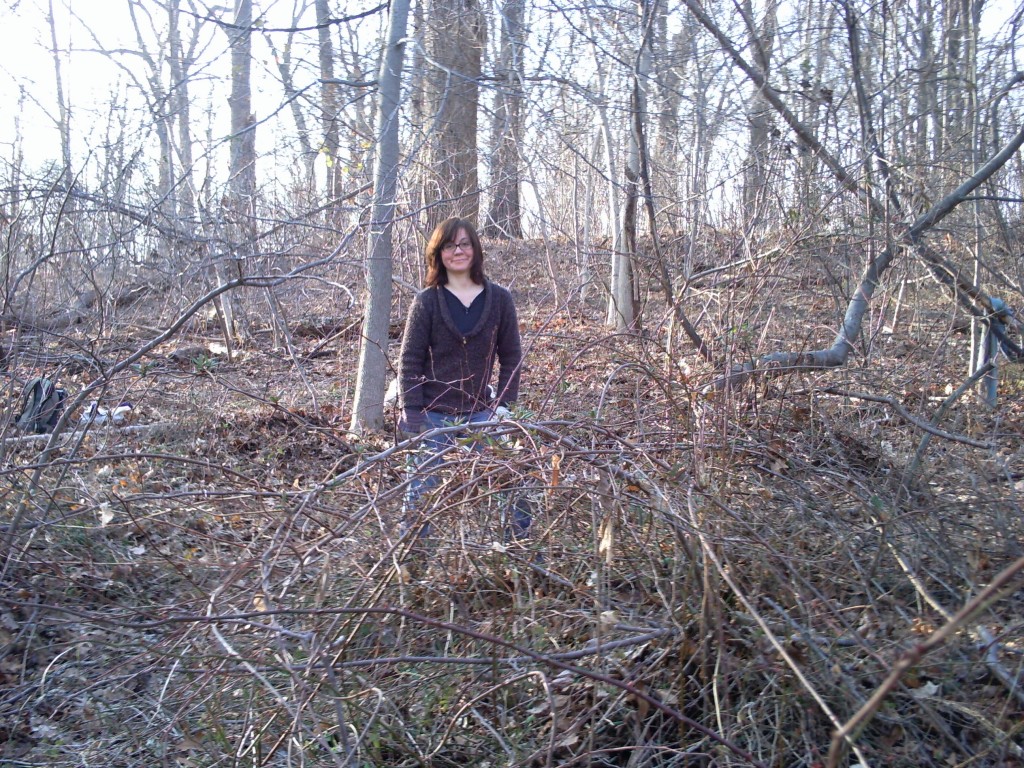
The thicket we decided to remove was about 15 feet across and as wide. It was covered with Japanese honeysuckle (Lonicera japonica) and Oriental bittersweet (Celastrus orbiculatus), another problematic invasive vine that was once widely sold as a pretty garden vine. Â Also next to the patch was The Japanese Angelica Tree, (Aralia elata). Just last week we had mapped this site for our Aralia elata map and named it Site 32. Â It can be viewed in our fun and educational interactive mapping feature on the Sanguine Root homepage. Featured will be an arial photo and map.
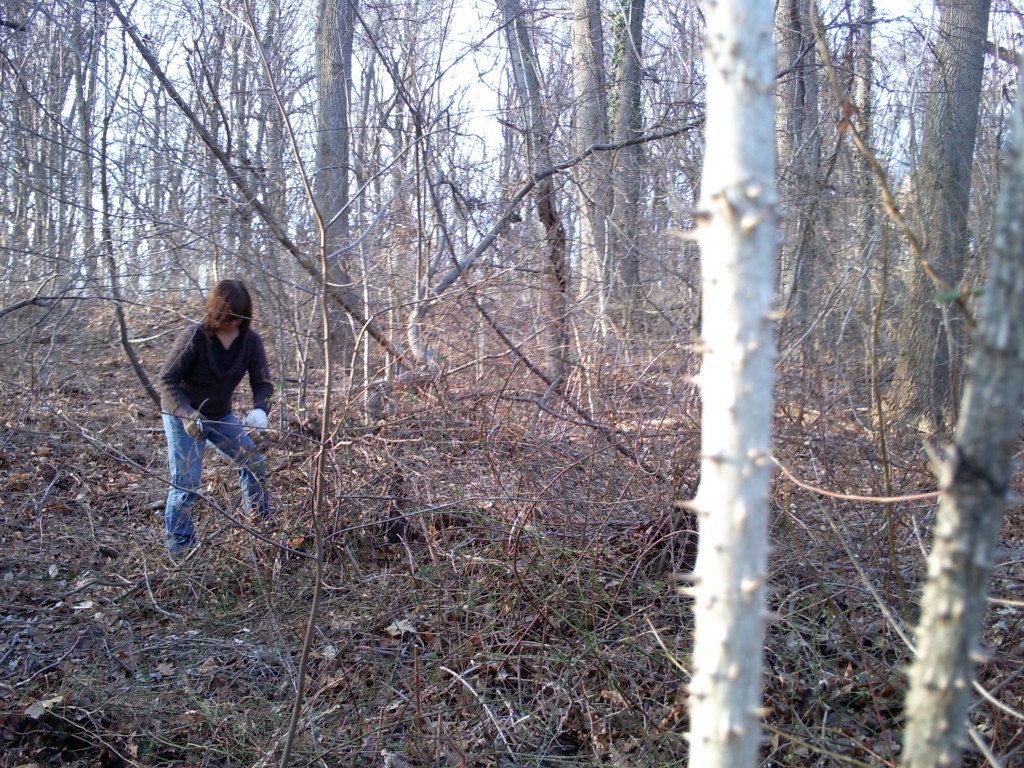
Speaking of fun, we would not do this if it was not fun. Â It is a great excuse to be outside and to interact with nature in a constructive manner. Â Fun and adventure can often go hand-in hand. Adventure usually involves a discovery of some sort: This Sunday the discovery of a most precious tiny sapling of a Beech tree (Fagus grandifolia) next to the thicket, covered in Japanese Honeysuckle. Â This little one still had its leaves from last year, hanging on, just like its older members of the forest.
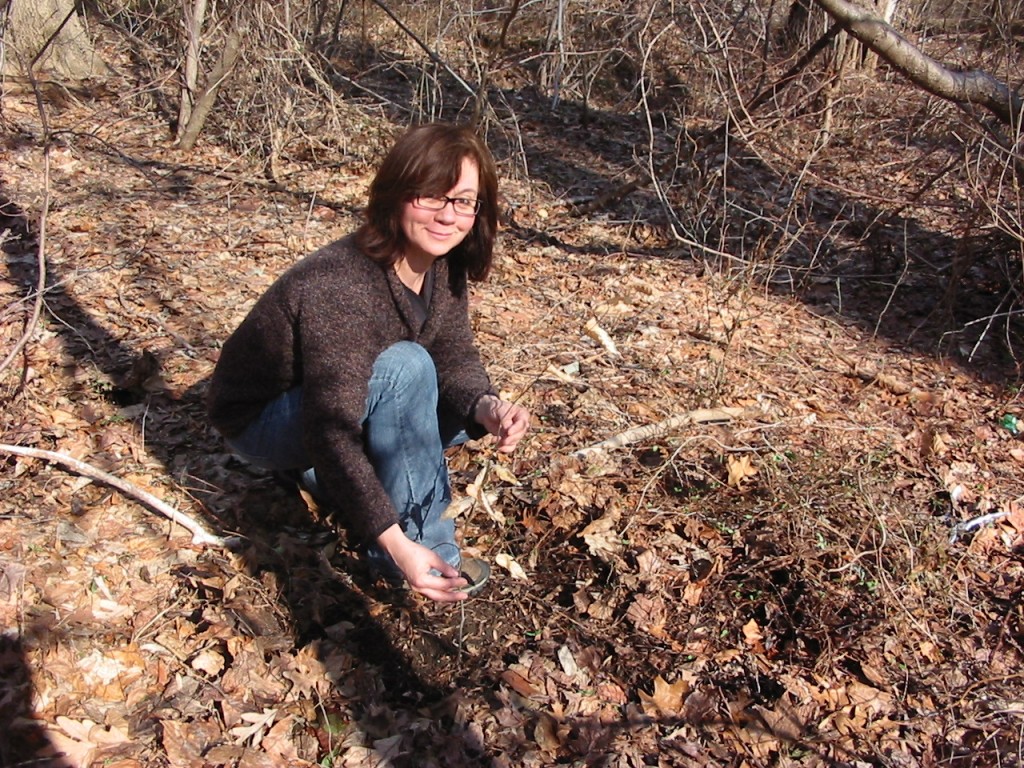
Some humans had decided that it was perfectly acceptable to routinely dump their trash in this section of the forest. Mostly beer bottles and cans. Parts of toys, some car parts, spray paint cans. Â Two party spots were discovered, created by those who have no problem drinking beer in the midst of their own filth.
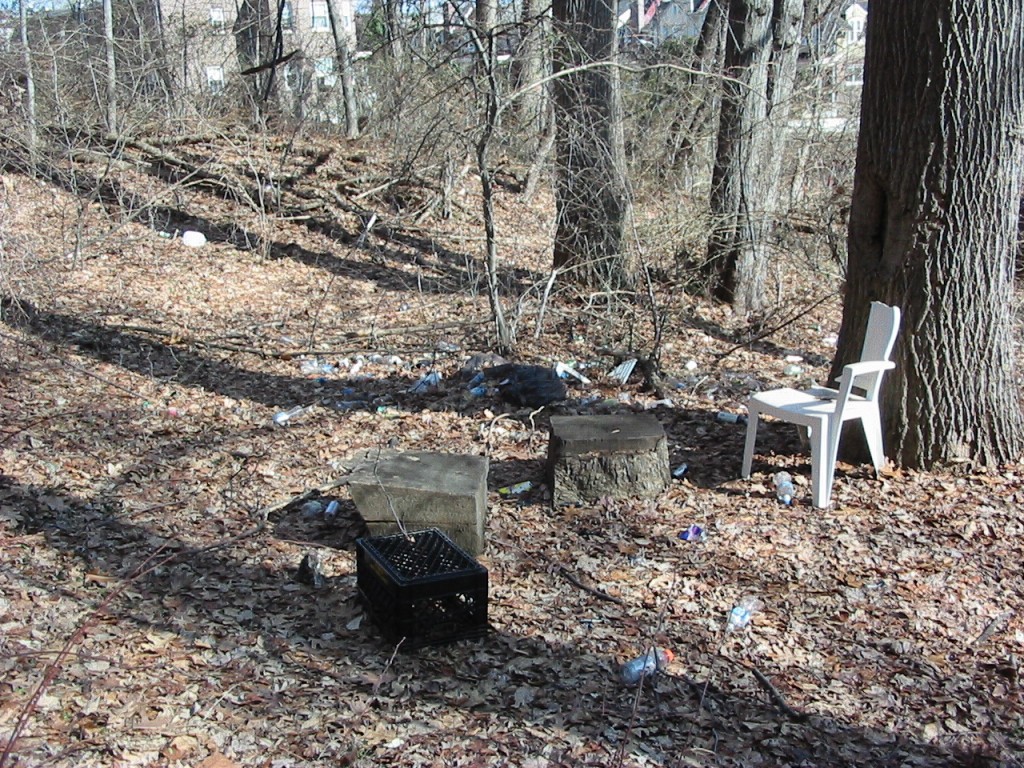
This was found while picking up a trail of trash that led to this site.
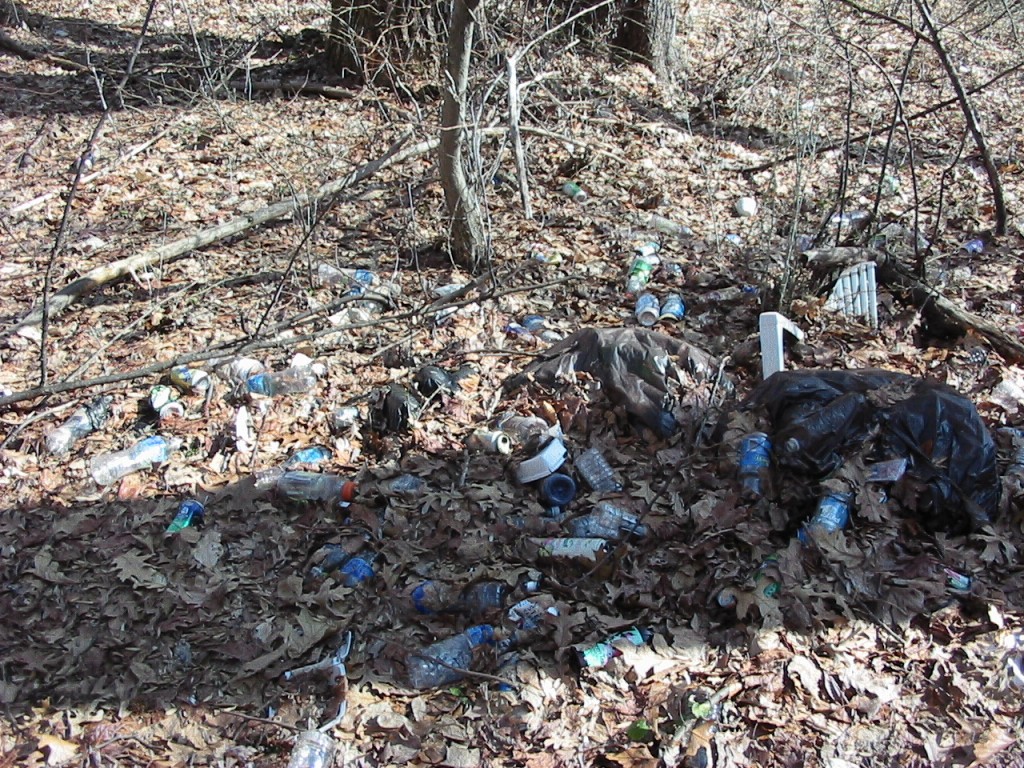
After filling an entire bag and a dumped plastic crate of this trash, it quickly became evident that there was more trash here than we could handle for the time being. Â As resources permit, we will further address this dumping site. Â Also the task began to lose its charm, and was no longer as fun as picking up scattered trash in the woods.

After removing the trash and invasives, the area was starting to take shape. It is starting to look like a woods should look.  The Tulip Poplars (Liriodendron tulipifera) create a decent canopy.  Below that are some mid-sized Sweet Gum  trees (Liquidamber srtyraciflua), and a few oaks and Beeches approaching twenty feet tall. Also, some decent Black Cherry(Prunus serotina), and Flowering Dogwood (Cornus florida) and Hickory.  We uncovered and liberated a decent shrub layer of Spicebush (Host to the larvae of the Spicebush Swallowtail butterfly (Papilio troilus)) as well as a yet un-identified shrub dogwood.  It will be fun to see what herbaceous perennials will grow at the site.  We have never been able to access this area when they grow because of the thorny thickets. Just to the north of the site, there is Bloodroot (Sanguinaria canadensis).
It is really fun to explore a new area and see what trees are growing there, and make an assessment of the conditions.
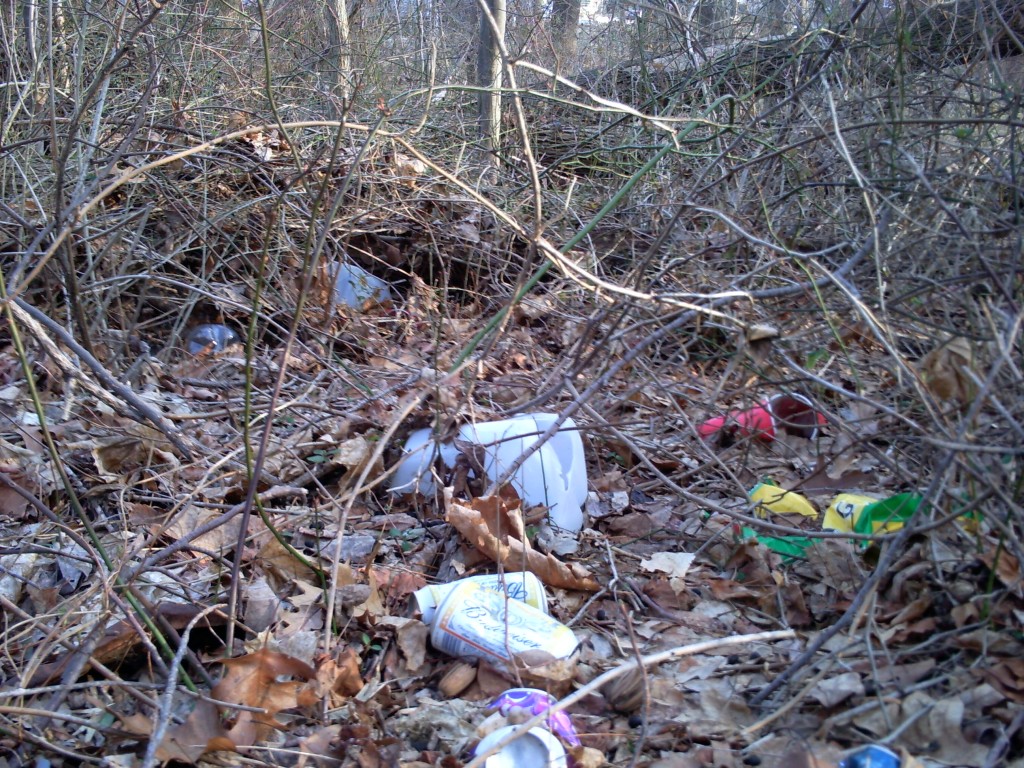
The green canes above the trash is none other than Rosa multiflora. We plan on addressing this site in time. Â We will first cut the canes, working from the outside of the site inwards. Â After the canes are cut down, we will use a mattock to assist in pulling out the roots. Â We will also be able to pick up the trash. Â When we are done restoring the site, we just sit back and relax, while we watch a symphony of native plants grow on their own. Â There will be Tulip Poplars and Sassafrass popping up, which is great because these are fast growing, pioneer trees, and are perfect for forest canopy restoration, something needed in an at-risk forest such as this. Â Spicebush will begin to grow as well as a laundry list of native herbaceous plants. Â My bet is on Jack-in-the Pulpit (Ariseama triphyllum), a magnificent forest floor specimen, Mayapple (Podophyllum peltatum)an umbrella like and distinctive plant with a graceful waxy flower, Bloodroot (Sanguinaria canadensis) a stunning early spring flower (see ‘about the Sanguine Root’) that has attained a cult-like status, and wild geranium (Geranium maculatum).
These plants will just grow on the site.  Step one: Remove the invasives.  Step two:  Watch the native plants grow.  Step 3: Monitor the site  for invasive plants and remove as they come.
The follow-through step is important. A restoration site needs stewardship. Â Even a few minutes time, at the right time of the year can make a huge difference in the long-term outcome of a restoration project.
For example: When the month of May decides to grace us with its presence, we will be faced with a Garlic Mustard (Alliaria petiolata) infestation at numerous sites undergoing restoration. This invasive exotic from Europe is a big mess in Morris Park. It will be the subject of much discussion in the coming months. For now, we know its coming and we know we will have to return to every site we have worked on in the past year and pull it up. Â It doesnt take long at all to pull it up at any given site, and when we do we can be sure that it will not reseed itself that year. This invasive depends on reseeding itself to survive. Â Knowing this will help our eradication strategy. Â The native plants need some help in getting established in a previously disturbed site. Â Mainly just by removing the invasives. Â This process is not gardening, where we decide what goes where, but instead we decide what does not belong and what does. Where what does belong is not up to us to decide. This is an exciting part of environmental restoration. Â What will grow, and where?
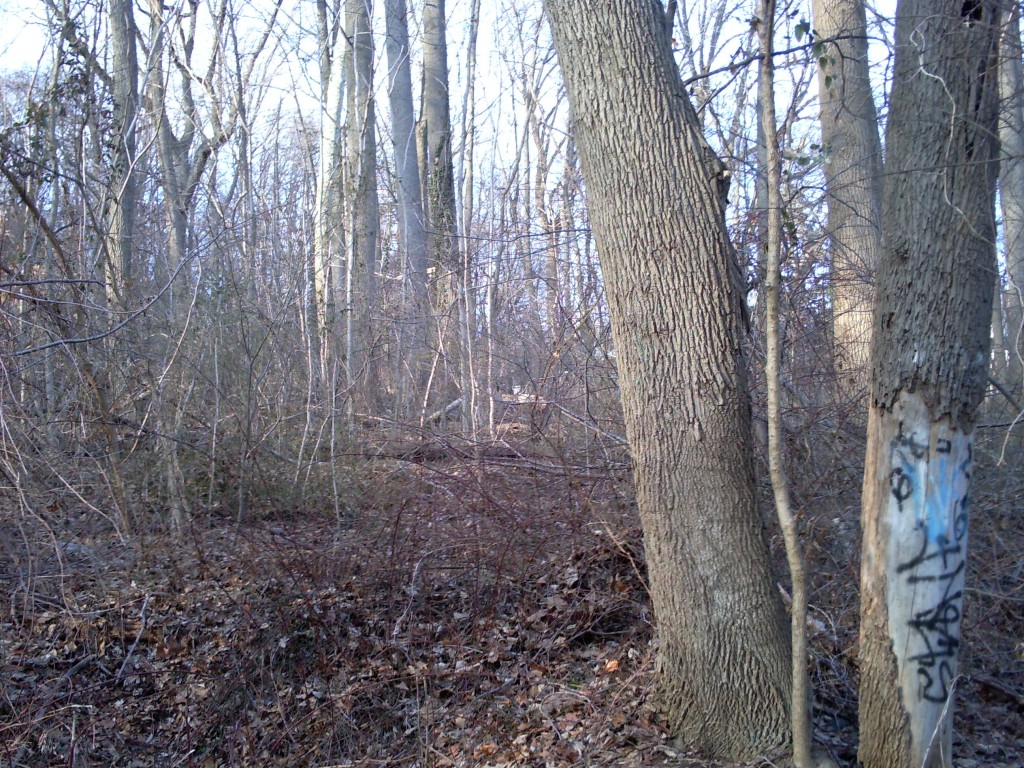
If we can be of some assistance in minimizing the negative effects of the human impacts on the forest, we are there. Â Watching the forest operating on its own, without the burden of exotic invasives is very interesting. Â Urban environmental restoration is a fun and engaging enterprise.
